
INTRODUCTION TO MALLORCA & MENORCA
As he approached Mallorca in 1888, the British traveller Charles Wood was all but overwhelmed, exclaiming “Nothing could be more beautiful than the views of sea and land. The island rounded in a succession of curves and bays, one headland after another opening out magnificently”. Very few English-speaking travellers ventured to Mallorca and Menorca in the nineteenth century, but those who did were suitably impressed by the beauty of the landscape if not by the islanders themselves, who were generally disparaged as disagreeable and unruly. The same conflicting attitudes survive today: millions of tourists count Menorca and Mallorca as favourite holiday destinations, though surprisingly few know much about the islanders. In fact, this easterly section of the Balearic archipelago – which also includes Ibiza and Formentera – has a rich cultural history, and many of its inhabitants still live in the most charming of country towns – Sineu, Artà and Ciutadella to name but three – at a (safe) distance from the teeming resorts of the coast.
The islands’ image embraces extreme ends of the spectrum: on one level, Mallorca is a popular haunt of the rich and famous; on the other it has an unenviable reputation for tacky tourism built on sun, sex, booze and high-rise hotels. The truth is that Mallorca manages to be both at the same time: at 5pm you can be carousing with the Brits in Magaluf and half an hour later you can be sipping a coffee in a quiet mountain village. The good news is that the ugly development of the 1960s, which submerged tracts of coastline beneath hotels, villas and apartment blocks, is essentially constrained to the Bay of Palma and a handful of mega-resorts notching the east coast, and for the most part Mallorca remains handsome and frequently fascinating, from the craggy mountains and medieval monasteries of its north coast to the antique towns of the central plain.
To the east of Mallorca lies Menorca, the second largest and most agricultural of the Balearic islands, with a population of just 94,000. Menorca’s rolling fields, wooded ravines and humpy hills fill out the interior in between its two main – but still small – towns of Maó, the island’s capital, and Ciutadella. Much of Menorca’s landscape looks pretty much as it did at the turn of the twentieth century, though a lot of the fields are no longer cultivated, and many – but certainly not all – of its beguiling beachy coves have been colonized by villa complexes. Nor is the development likely to spread: the resorts have been kept at a discreet distance from the two main towns and the Menorcans are keen to avoid overdevelopment. Indeed, they have recently created a chain of conservation areas that now protect about half of the island, including the pristine coves that count among its real delights.
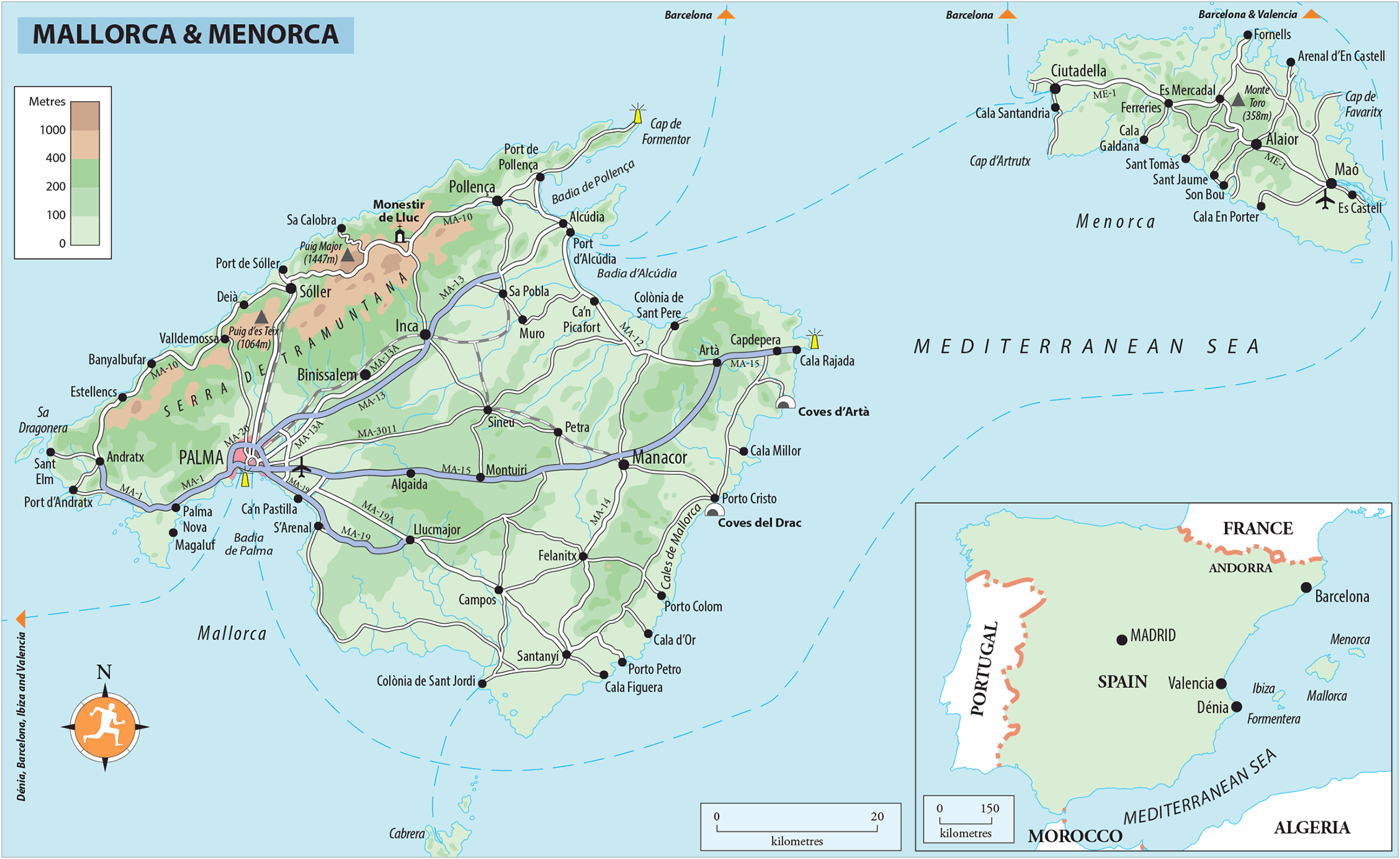
FACT FILE
- The Balearic islands have a population of just under 1,200,000; Mallorca weighs in with 870,000, Menorca with just 94,000. Foreign-born inhabitants account for around twenty percent of the population; the largest group are from Germany, with an average age of 48.
- The Spanish parliament – the Cortes Generales – sits in Madrid, but many of its powers have been devolved to 17 autonomous regions, one of which – the Comunidad Autónoma de las Islas Baleares – covers the Balearics, whose capital is Palma.
- The mountains of Mallorca are home to the islands’ ornithological star turn, the rare black vulture (Aegypius monachus), a dark and solitary bird of striking proportions, standing 130cm tall, weighing anywhere between 7 and 14kg and with an adult wingspan of nearly 3m. They almost died out in the 1970s, but a well-executed conservation scheme seems to have saved the day – there are now about 120 birds.
- Spain is a Catholic country, though only about 15 percent of its population attends Mass every week. One result of the decline in religious observance has been a shortage of monks and nuns: all the monasteries on Mallorca are now deconsecrated, with several offering inexpensive lodgings.
Where to go
In Mallorca, the logical place to begin a visit is Palma, the island capital, which arches around the shores of its bay just a few kilometres from Mallorca’s busy international airport. Palma is the Balearics’ one real city, a bustling, historic place whose oligarchic mansions and magnificent Gothic cathedral serve as a fine backdrop to an excellent café and restaurant scene, from the hipster hangouts of the Sa Gerreria neighbourhood to the chef-led, chichi restaurants of the Old Town – plus everything in between. Add to this lots of good hotels and you’ve got a city that deserves at least a couple of days. Indeed, many visitors spend their entire holiday here, day-tripping out to the rest of the island – an easy proposition as it’s only a couple of hours’ drive from one end of Mallorca to the other. To the east of Palma stretches Es Pla, an agricultural plain that fills out the centre of the island, sprinkled with ancient and seldom-visited country towns, the most interesting of which are Sineu and Petra. On either side of the plain are coastal mountains. To the north, the wild and wonderful Serra de Tramuntana rolls along the entire coastline, punctuated by deep sheltered valleys and beautiful cove beaches, notably Cala Deià and the Platja de Formentor. Tucked away here in the mountains is Sóller, a delightful little town of old stone merchant houses that is best reached from Palma on the antique railway, an extraordinarily scenic journey. The mountains also camouflage a string of picturesque villages, most memorably Estellencs, Banyalbufar, Deià – the long-time haunt of Robert Graves – and Fornalutx, as well as a pair of intriguing monasteries at Valldemossa, where Chopin and George Sand famously wintered, and Lluc, home to a much-venerated statue of the Madonna. For walkers, the range is crisscrossed with footpaths and makes for ideal hiking, particularly in the cooler spring and autumn. Beyond Lluc, the mountains roll down to a coastal plain that holds the lovely little town of Pollença and one of the island’s most appealing medium-sized resorts, Port de Pollença, which is itself just along the bay from the sprawling but well-kept resort of Port d’Alcúdia. In the north, Mallorca finishes with a final scenic flourish in the rearing cliffs of the Península de Formentor.
Mallorca’s second mountain range, the gentler, greener Serres de Llevant shadows the coves of the east coast and culminates in the pine-clad headlands and medieval hill towns of the island’s northeast corner. Many of the east-coast resorts are overblown, but the pick are Cala Rajada, close to several fine beaches, and pint-sized Porto Petro. There are also a couple of easily visited cave systems – the most diverting is the Coves del Drac – and the comely, artsy hilltop town of Artà, close to the substantial prehistoric remains of Ses Paisses. Different again is the south coast, where a long and rocky shelf jags out into the ocean – though this part of the island is redeemed by the charming resort and seaport of Colònia de Sant Jordi and its accompanying beaches.
Smaller, flatter Menorca, the most easterly of the Balearics, boasts two attractive towns, the island capital of Maó, just 5km from the airport, and Ciutadella, 45km to the west. Both have preserved much of their eighteenth- and early nineteenth-century appearance, though Ciutadella has the aesthetic edge, the many lanes and alleys of its ancient centre shadowed by fine old mansions and monasteries. Linking the two, the island’s only main road, the Me-1, slips across the rural interior, passing the pleasant market towns of Es Migjorn Gran, Es Mercadal and Ferreries. A series of sideroads branches off to the island’s resorts, the best appointed of which are Cala Galdana and the one-time fishing village of Fornells, as well as a string of wind-battered headlands and remote cove beaches. The highway also squeezes past Monte Toro, Menorca’s highest peak and the site of a quaint little convent with panoramic views. Menorca’s other claim to fame is its smattering of prehistoric remains – two of the most important being Talatí de Dalt, outside Maó, and the Naveta d’es Tudons, near Ciutadella.

CLOCKWISE FROM TOP LEFT WALKING IN MALLORCA; MAÓ, MENORCA; PLATJA DE CAVALLERIA, MENORCA
FABULOUS FINCAS
The Balearics are dotted with old stone fincas (or farmhouses), many of which have been turned into holiday homes and hotels. The largest – for example La Granja and Raixa – are effectively rural palaces that have become tourist attractions in their own right, but the bulk offer lodgings, mostly at the top end of the market. Prime examples include Ca’s Xorc in the mountains near Sóller; Can Llenaire, still part of a working farm and with panoramic coastal views; Es Castell, a wonderful hotel in the foothills of the Serra de Tramuntana; and the Biniarroca Hotel, near Sant Lluís in Menorca. The charm of staying in a finca lies at least in part in the solidity and simplicity of its architectural form: a stone or stone-and-rubble exterior, a flagged exterior courtyard, shuttered and grilled rectangular windows, and high, wood-beamed ceilings. It’s also usual to find fincas surrounded by a raft of specialist agricultural buildings, from olive presses and workshops through to barns and store houses.
When to go
There’s little difference between the climates of Mallorca and Menorca. Spring and autumn are the ideal times for a visit, when the weather is comfortably warm, with none of the oven-like temperatures that bake the islands in late June, July and August. It’s well worth considering a winter break too: even in January temperatures are usually high enough to sit out at a café in shirtsleeves. Both islands see occasional rain in winter, however, and the Serra de Tramuntana mountains, which protect the rest of Mallorca from inclement weather and the prevailing northerly winds, are often buffeted by storms, while Menorca, where there’s no mountain barrier, can be irritatingly windy. Reflecting their agricultural past, the islanders have names for the four main winds that blow across their land: Tramuntana, Ponent, Migjorn and Llevant, respectively northerly, westerly, southerly and easterly.

ILLA DE CABRERA
BEST BALEARIC BEACHES
MALLORCA
Cala Deià Crystal-clear waters and a narrow pebbly beach in a hoop-shaped cove at the end of a lovely wooded gulch. Great setting; great beach bar-restaurant.
Cala Tuent Not much sand here – it’s all shingle and pebble – but the mountain setting is a delight and the beach is rarely crowded.
Es Trenc Whichever way you cut it, most of Mallorca’s beaches are crowded, but not this one – a long, sandy strand on the south coast.
Platja de Palma Roast and pose among the muscle-flexing, oiled pecs and abs.
Port d’Alcúdia A long and immaculately maintained stretch of golden sand on the north coast.
Port de Pollença A bucket-and-spade family affair, with safe bathing and sandcastle building.
Sant Elm Cosy, sandy beach in a charming setting on the western tip of the island.
MENORCA
Cala Macarella A real treat, the cove’s band of white sand is flanked and framed by handsome limestone cliffs.
Cala Pregonda It takes a good deal of effort to get here, but the reward is a wide slice of sand in a beguiling setting.
Cala Turqueta Exquisite and beautiful beach, comprising a handsome horseshoe of white sand set beneath limestone cliffs.
Platja de Cavalleria A slender arc of pristine sand is framed by grassy dunes at this delightful north-coast beach.

FROM LEFT BINIARAIX, MALLORCA; EN ROUTE TO CASTELL D’ALARÓ, MALLORCA; SANT ELM, MALLORCA
AUTHOR PICKS
Our author has made countless trips to Mallorca and Menorca over the years, but there are some things he likes to do, or places he just has to visit, every time he returns. Here’s a selection of his favourites.
Prettiest villages Both Menorca and Mallorca are threaded with pretty villages, but three of the best are Estellencs, where the tourist presence is noticeably thin, Biniaraix, the trailhead for some dramatic mountain walks, and Orient, a place so quiet that you can hear the softest of bird calls.
Mallorcan Primitives Not Primitive Mallorcans, but rather a school of medieval artists who produced a brigade of exquisite devotional paintings, on display in Palma at the cathedral and at the Museu Diocesà.
Mountain roads Not for the faint-hearted, or the poor-of-steering, some of Mallorca’s mountain roads offer superb views: try the hairpins of the Castell d’Alaró and the lane up to the Ermita de Nostra Senyora del Puig for starters.
Palma cathedral No question, this is one of the finest Gothic churches in Europe – absolutely unmissable, both for the stunning beauty of its medieval architecture and for the later additions made by no less a figure than Antoni Gaudí.
Great hikes Both Mallorca and Menorca offer the adventurous – and not so adventurous – hiker some wonderful experiences: the circular hike from Valldemossa on the Archduke’s Path is a particular favourite, as is the hike from Es Grau to Sa Torreta on Menorca.
Seaside R&R The sandy beach at Sant Elm is a favourite spot for some downtime, as are the quiet strands near the resort of Colònia de Sant Jordi. With kids in tow, head for the family-friendly beach at either Port de Pollença or Port d’Alcúdia.
Our author recommendations don’t end
here. We’ve flagged up our favourite places – a perfectly sited hotel, an
atmospheric café, a special restaurant – throughout the guide, highlighted with the
 symbol.
symbol.
17 THINGS NOT TO MISS
It’s not possible to see everything that Mallorca and Menorca have to offer in one trip – and we don’t suggest you try. What follows is a selective taste of the islands’ highlights: gorgeous beaches and magnificent scenery, quaint towns and great places to eat and drink. All entries have a reference to take you straight into the Guide, where you can find out more.

1 Palma–Sóller train Take a trip on the vintage train that wends its way over the mountains from Palma to Sóller providing wonderful views and serving as a fine introduction to Mallorca’s best landscapes.

2 Sóller Sóller is an appealing country town of old stone mansions surrounded by orange and lemon groves, not to mention mountains.

3 Talatí de Dalt In an attractive rural setting close to Maó, this extensive site is one of the most satisfying of Menorca’s many prehistoric remains.

4 Valldemossa Sitting pretty in the hills, the ancient town of Valldemossa is home to a fascinating monastery whose echoing cloisters and shadowy cells once accommodated Chopin and George Sand.
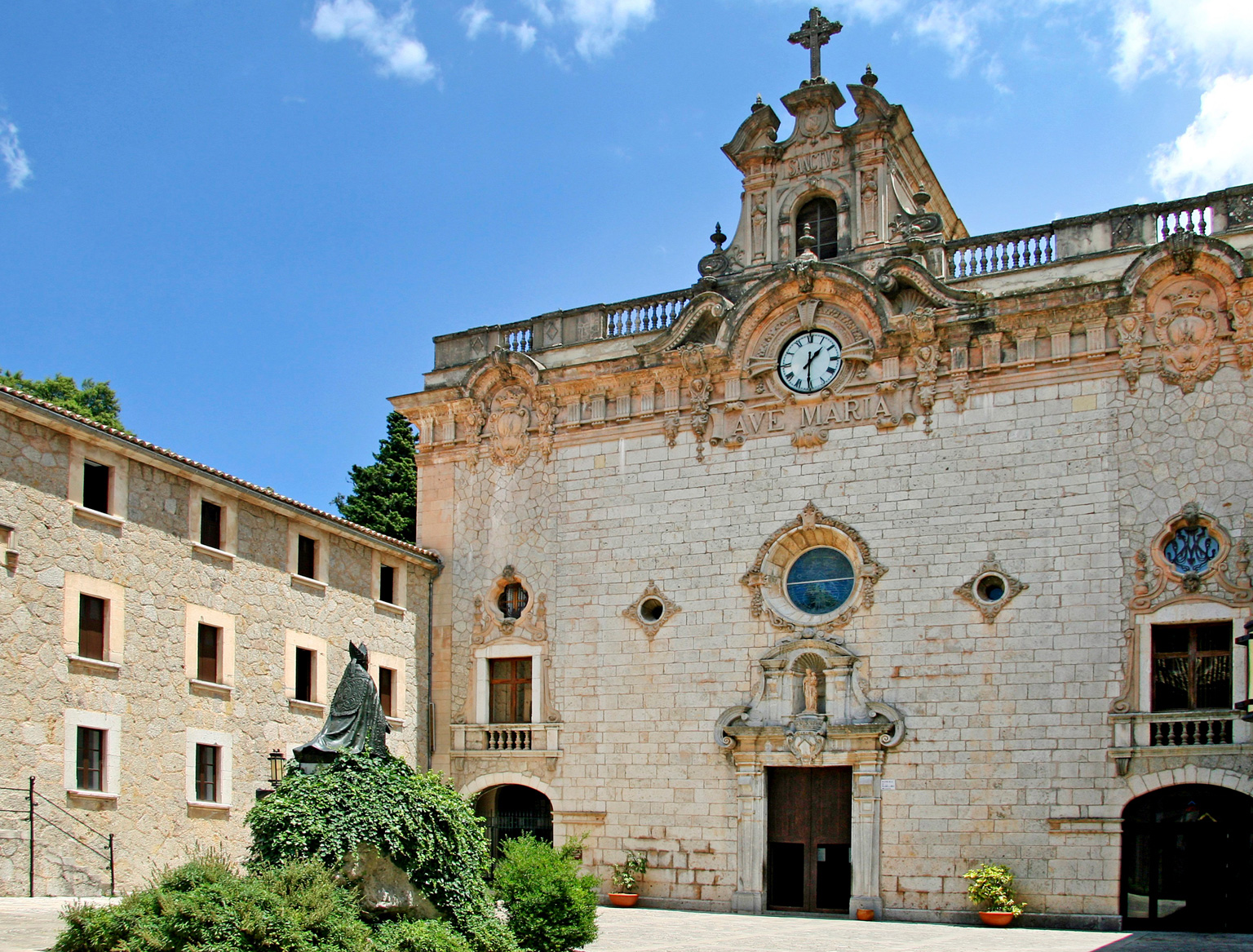
5 Monestir de Lluc This rambling monastery holds the Balearics’ most venerated icon, La Moreneta, and is also a great base for mountain hikes.

6 The Mallorcan Primitives A medieval school of painters who produced strikingly naive devotional works – Joan Desi being one of its most talented practitioners. Must-see places include: the Museu de la Catedral, the Museu Diocesà and the Museu de Mallorca.

7 Península de Formentor The knobbly peaks and sheer cliffs of this spectacular peninsula backdrop one of Mallorca’s best beaches and ritziest hotels.

8 Hiking in the Serra de Tramuntana Rolling along the west coast, this rugged mountain range holds scores of exhilarating hiking trails.

9 Eating in Palma Palma has the liveliest café and restaurant scene in the Balearics, with a hatful of first-rate places both in the Old Town and Sa Gerreria; and be sure to try the islanders’ favourite nibble – a spiralled flaky pastry known as an ensaimada.

10 Ciutadella The prettiest town on Menorca, the island’s former capital cuddles up to a narrow harbour, its network of cobbled lanes flanked by a string of handsome mansions.
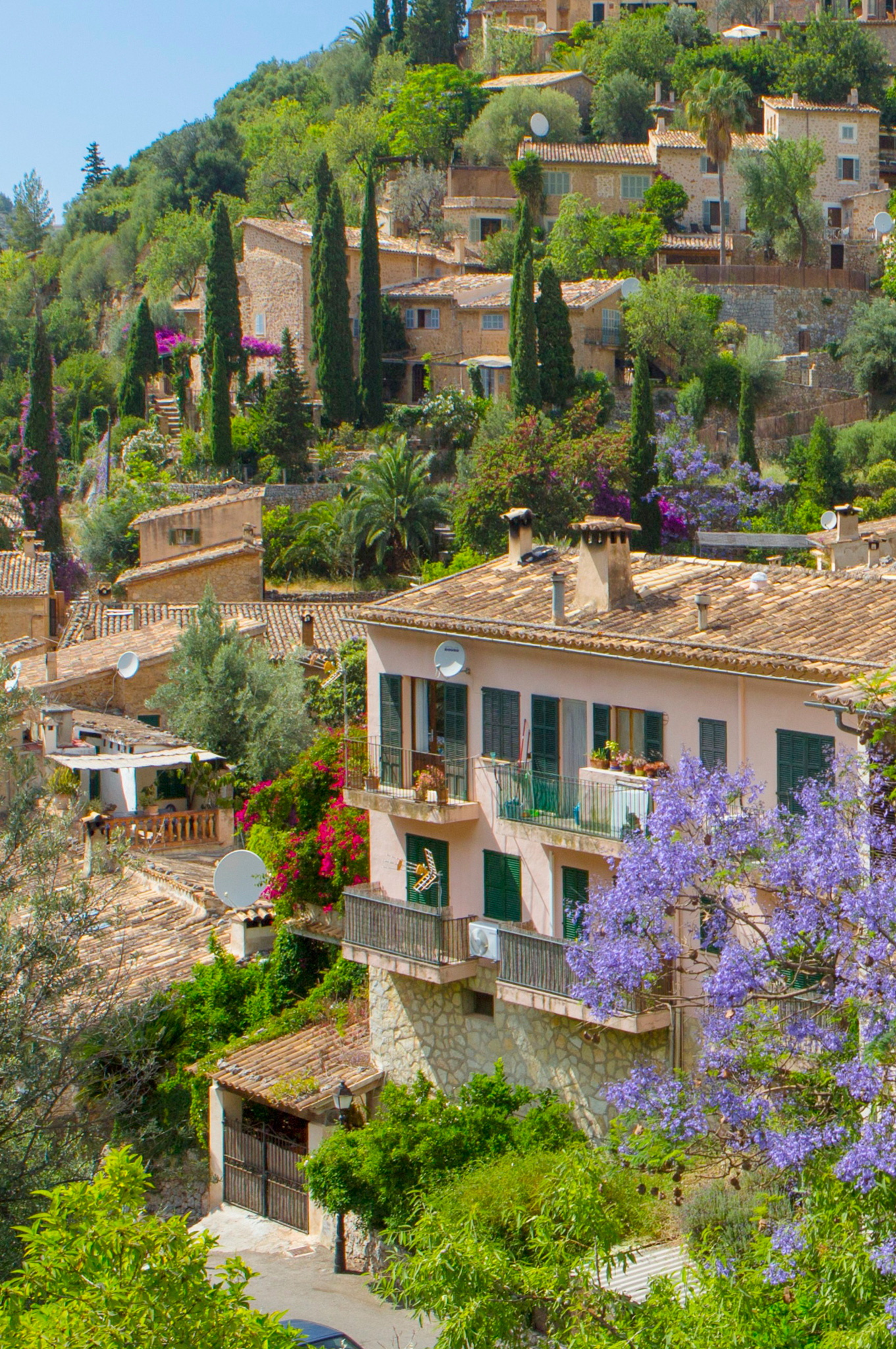
11 Deià No wonder Robert Graves made his home in the coastal village of Deià – a beguiling huddle of old stone buildings set against a handsome mountain backdrop.

12 Santuari de Sant Salvador, Artà The sun-bleached roofs of small-town Artà clamber up the steepest of hills to this shrine, one of Mallorca’s most important, with the prehistoric village of Ses Païsses close at hand.

13 Palma Cathedral Dominating the waterfront, the monumental bulk of Palma’s magnificent cathedral offers one of Spain’s finest examples of the Gothic style, its interior flooded with kaleidoscopic shafts of light.

14 Cap de Favàritx This windswept cape, with its bare, lunar-like rocks, is a scenic highlight of Menorca’s north coast.

15 Maó Menorca’s modest capital has an amiable small-town feel, its tiny centre a labyrinth of ancient lanes and alleys graced by old and appealing townhouses and churches.

16 Cabrera Now a national park, this austere, scrub-covered islet is home to a battered hilltop castle, a wealth of birdlife – and the rare Lilford’s wall lizard.
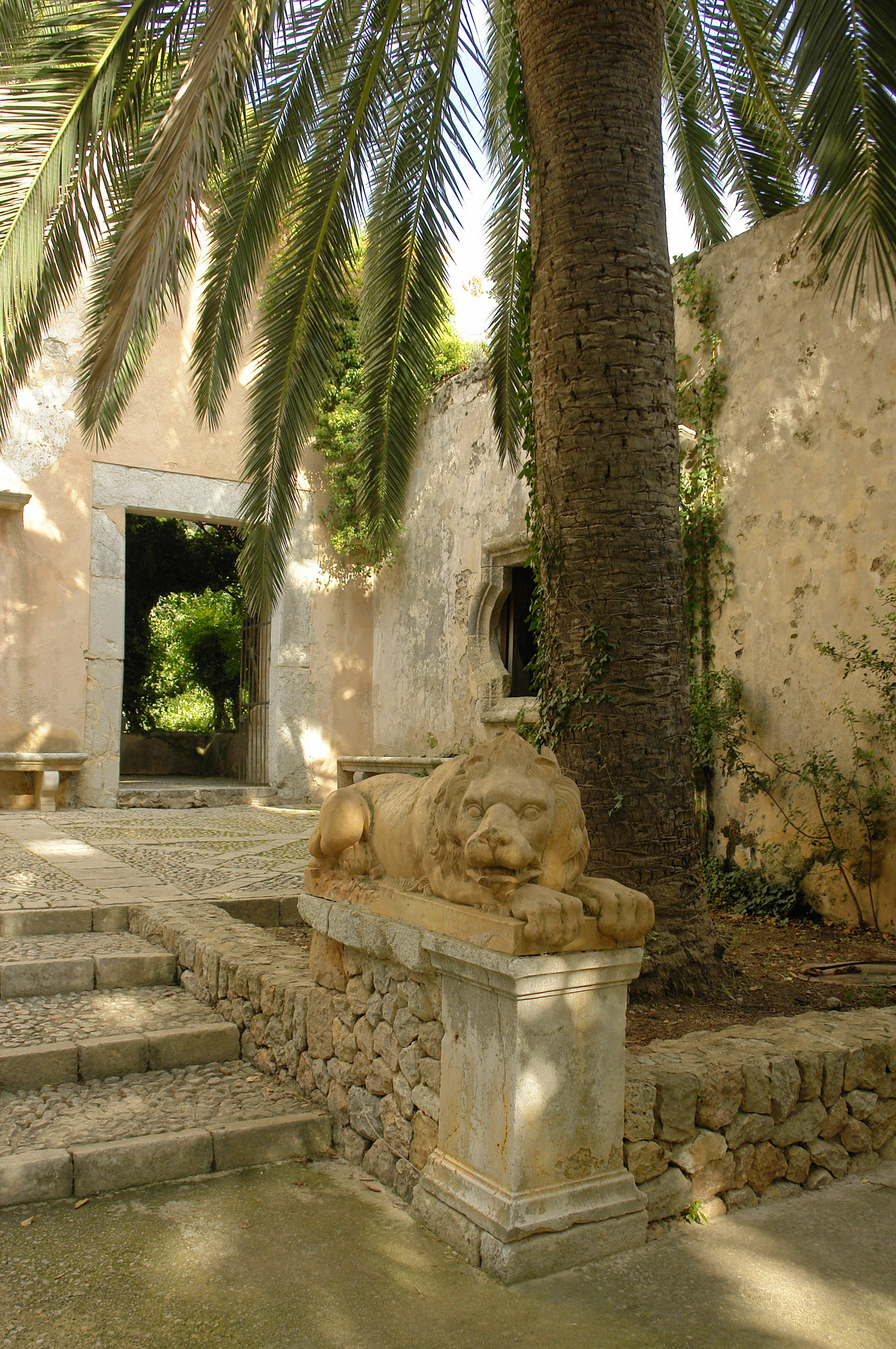
17 Jardins d’Alfàbia The lush, oasis-like Jardins d’Alfàbia are the finest gardens on Mallorca, their watered trellises and terraces dating back to green-fingered Moors.

FROM LEFT ESTELLENCS; THE MONASTERY AT LLUC
ITINERARIES
Mallorca and Menorca’s attractions are myriad – our three itineraries guide you round Mallorca’s must-see sights, Menorca’s unique prehistoric remains, and – for those on a budget – Mallorca’s most authentic and relatively inexpensive places to stay.
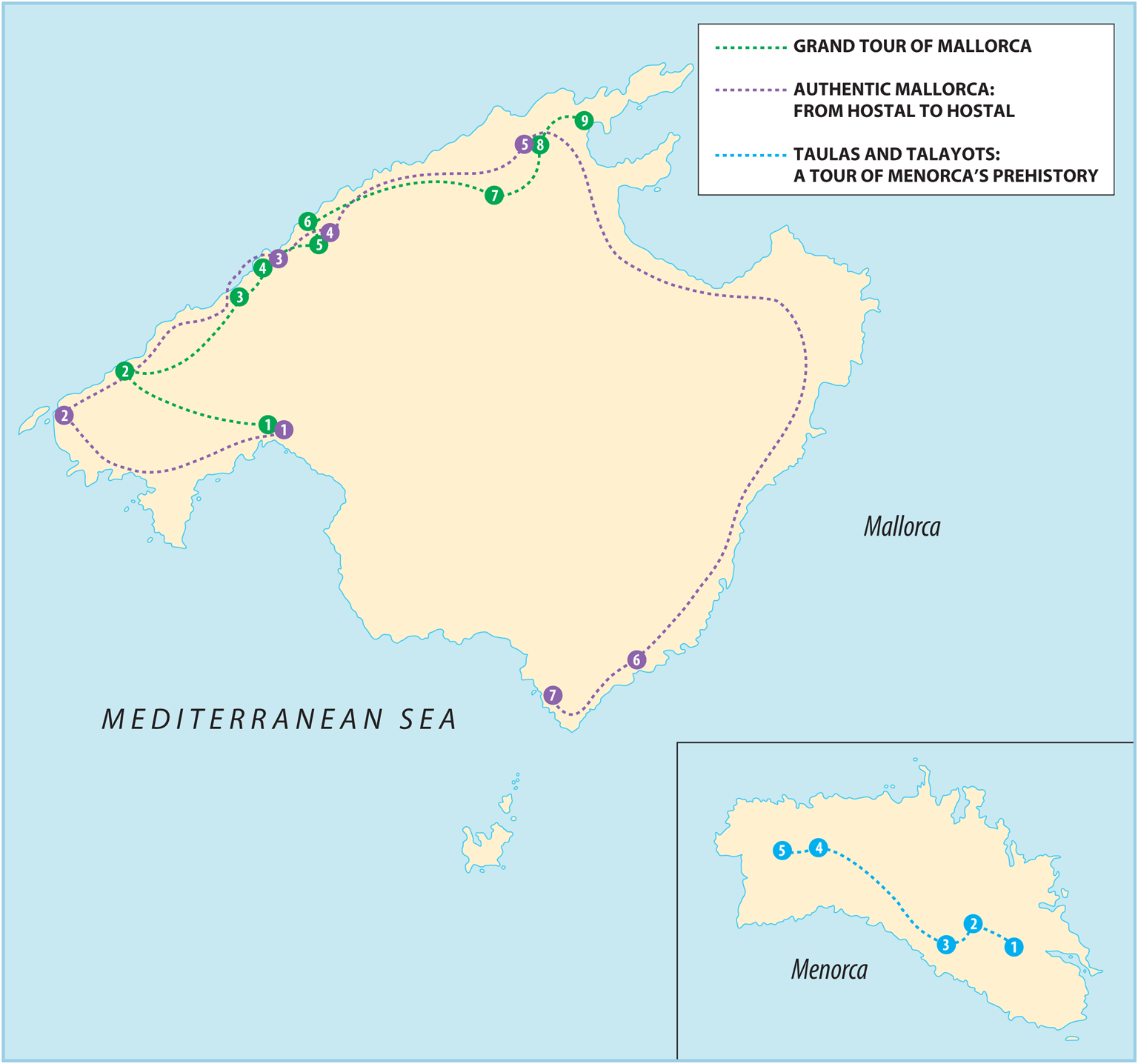
GRAND TOUR OF MALLORCA
Spend a few days in Palma before threading your way along the island’s invigorating, surf-battered north coast, via quiet villages and wondrous scenery.
1 Palma Allow three days to explore the capital’s ancient nooks and crannies and enjoy its first-rate cafés and restaurants.
2 Estellencs Some say this is Mallorca’s prettiest village, a huddle of ancient houses clinging gingerly to steep, sea-facing slopes.
3 Valldemossa A hilltop town with the island’s most fascinating monastery, where Chopin spent an unforgiving winter.
4 Deià Between mountain and sea, chichi Deià has a scattering of old stone houses perched high above the ocean.
5 Sóller Wandering the narrow cobbled streets of this beguiling town gives you a real flavour of island life.
6 Port de Sóller Arced around a horseshoe-shaped bay, this recently upgraded resort has a superb selection of restaurants.
7 Lluc The monks may have gone, but the monastery and its shrine remains, making it one of the island’s key sights.
8 Pollença A cosy town with a low-key feel in the prettiest of settings.
9 Port de Pollença Safe bathing and a long sandy beach are the key to this resort’s family-friendly appeal.
TAULAS AND TALAYOTS: A TOUR OF MENORCA’S PREHISTORY
Menorca is world-famous for its prehistoric remains, which lie scattered across the whole island. They date from the so-called Talayotic period and are named for the distinctive conical rock mounds – talayots – found at most key sites. The talayots are often lie cheek-to-jowl with Menorca’s most mysterious artefacts, T-shaped taulas of around 4m high.
1 Talatí de Dalt This delightful prehistoric site features a taula, a large talayot – and a tribe of free-range hogs.
2 Torralba d’en Salord A rural setting and one of the best-preserved taulas on the island makes this a worthwhile diversion.
3 Torre d’en Gaumés One of the largest prehistoric settlements on the island, with three talayots, a taula and the remains of a water collection system.
4 Torrellafuda A well-preserved talayot in a lovely, rustic setting.
5 Naveta d’es Tudons The island’s most intact naveta, or stone ossuary.
AUTHENTIC MALLORCA: FROM HOSTAL TO HOSTAL
In recent years, Mallorca has sprouted a veritable battalion of deluxe hotels as the island as a whole has moved upmarket, and though many are great places to stay, they are expensive, and often reflect little of the island’s heritage. But there remains a scattering of well-kept, traditional hostales and hotels which offer a taste of an older, less homogenized Mallorca – with the added bonus that they are all relatively inexpensive.
1 Hotel Born, Palma In a big old townhouse, this enjoyable hotel with its lovely courtyard has a great city-centre location.
2 Hostal Dragonera, Sant Elm Unpretentious, inexpensive hostal with a prime seashore location in this tidy little resort.
3 Hostal Miramar, Deià Handsome Deià may be a trustafarian paradise, but the Miramar bucks the trend, being a simple and traditional hostal with grand views out across the coast.
4 El Guía, Sóller Long-established and very traditional lodgings, just footsteps from the train station.
5 Pension Bellavista, Pollença Perhaps the funkiest place to stay on the island – these Spanish hipsters must have Franco turning in his grave.
6 Hostal Condemar, Cala Mondragó A small slice of the east coast has been conserved and protected by the creation of Mondragó Parc Natural – and this hostal is at the heart of it.
7 Hostal Playa, Colònia de Sant Jordi Low-key hostal perched tight against the seashore of this appealing resort.